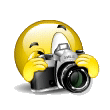What Is The Secret Behind
-
Recently Browsing 0 members
- No registered users viewing this page.
-
Topics
-
-
Popular Contributors
-
-
Latest posts...
-
16
USA Trump's Shock Move: Fed Governor Lisa Cook Axed in Sudden Purge
Praaaaiiise the Lawd. Imagine if Harris had won. 😃 -
21
Report France Summons US Ambassador: Fury Over Antisemitism Claims
Some more background on this Kushner. Wonder if there is anything else but criminals in Trumps's administration. MAGA's no need for an answer from you boys, as it is too obvious. https://finance.yahoo.com/news/france-summons-us-envoy-kushner-222404546.html “France firmly rejects these latest allegations,” the foreign ministry said in a statement late Sunday. “They also fall short of the quality of the transatlantic partnership between France and the United States and of the trust that must prevail between allies.” The State Department didn’t immediately respond to a request for comment about Kushner’s whereabouts or why he wasn’t able to make it to the meeting. Kushner is a real estate developer and the father of President Donald Trump’s son-in-law, Jared. He served more than a year in federal prison for crimes including tax evasion and witness tampering, but Trump later pardoned him in 2020. -
11
Tattoos.
This has come up before. Why worry about what others do if it doesn't affect your life? People from all walks of life have gotten them all along. From the rich to the poor, hookers,and celebrities, men and women, doctors and the homeless, monks and rock stars, military and police. My dad had one and was a genius. I don't have any but all my children do, besides my 8 year old, but I'm sure it'll happen, seeing her siblings all have them. No ones business but theirs. let it go. -
21
Report France Summons US Ambassador: Fury Over Antisemitism Claims
I've heard it all now. Recognizing a "Two State Solution" and recognizing a sovereign Palestinian state is now "antisemitism." My goodness, how the Overton Window has been crow-barred out of its frame. Considering several U.S. presidents have supported a Two-State Solution for Israel, including Bill Clinton (Oslo Accords, 1993-2000), George W. Bush (Roadmap for Peace, 2002), and Barack Obama (consistent advocacy, e.g., 2016 UN Resolution 2334), as well as Harry Truman (where a two-state solution was implied for the nascent state of Israel) - that means that ALL of these US Presidents are antisemitic? I bet that is surprising news to them! What a forsaken world we live in. Which explains why I'm a Buddhist. The world is simply awash in the blood of those killed in The Name and In The Glory Of God. -
6
-
2
UK Pub and Travel Bans: Sentencing Shake-Up Sparks Debate
Well if they did in the U.K what Trump in the US.and get all the illegal immigrants out of gaol and putting them on a plane and sending them back where they come from.That'll clean out some space.
-
-
Popular in The Pub










Recommended Posts
Create an account or sign in to comment
You need to be a member in order to leave a comment
Create an account
Sign up for a new account in our community. It's easy!
Register a new accountSign in
Already have an account? Sign in here.
Sign In Now